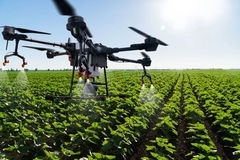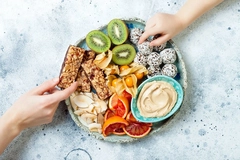Rabobank’s global poultry industry report: Bird flu, war and potential trade conflicts loom over 2025
The global poultry industry has been sustained by rising animal protein prices and lower feed costs compared to last year, according to a Rabobank report. But, the space faces significant uncertainty from US import tariffs, bird flu outbreaks, and the Israel-Iran conflict, which are weighing heavily on the industry and are expected to continue to impact global trade and market dynamics.
The postponement of significant import tariffs in April has left the possibility of a trade war looming, while the escalating Israel-Iran conflict is also a constant threat.
The International Monetary Fund has downgraded its global GDP growth forecast by 0.5%.
Nan-Dirk Mulder, senior global specialist in animal protein at RaboResearch Food & Agribusiness, tells Food Ingredients First that animal protein price rises are mainly due to tight market balances.

“Global chicken and egg markets have been affected by avian flu in key production markets, while demand is strong. Growth (2.8%) has been above the projected 2-2.5% growth,” he explains.
“Beef prices have also been high, especially due to tight supply in Northern Hemisphere countries. Pork has been the exception, but also pork prices have started to rise in line with the rising competitive protein prices. The very volatile market context in China has been affecting the global pork market.”
Global markets are expected to remain resilient, but regional variations are likely, influenced by geopolitical events, their economic repercussions, and the evolving bird flu situation.”
Bird flu impacts
Bird flu has already had a significant impact on global trade due to outbreaks in Brazil and Europe. Forty to forty-five percent of Brazilian trade has been stopped by import restrictions after the outbreak of avian flu in early May. Central Europe has also been affected by avian flu outbreaks, with exports to third countries stopped.
“These countries are especially important for hatching egg exports to Eastern Europe, the Middle East, and Africa. This has heavily impacted global poultry trades and hatching egg trade and has especially impacted regions like Mexico, Europe, and South Africa.”
“Brazil has now declared itself free of avian flu, and trade will gradually recover, but new outbreak risks remain. As the Northern Hemisphere winter season gets closer, new avian flu risks will rise.”
Earlier this year, the USDA ramped up its fight to prevent the spread of avian flu, which has caused major problems in the country, including skyrocketing egg prices and risks to poultry producers. Meanwhile, avian flu has forced farmers to slaughter millions of chickens.
 Global chicken and egg markets have been affected by avian flu in key production markets.
Global chicken and egg markets have been affected by avian flu in key production markets.
Geopolitics influencing poultry markets
Geopolitics can also massively impact trade. Although US tariffs are postponed, this theme will likely return.
Should trade agreements be reached, the US poultry sector could expand its market access, which could be potentially disadvantageous to local producers or competing exporters.
“We have adjusted our global production forecast for 2025 from 2.5-3% growth to 2-2.5% growth, with potential further reductions if the conflict escalates,” explains Mulder.
“The US is not a major chicken import market, but indirectly, there could be a big impact. Especially if we move to a trade war situation, and there are restrictions on US exports. In that case, Brazil, and likely also Europe, Russia, Ukraine, and Thailand, could benefit.”
“There might also be an economic impact in this scenario, with countries with high import tariffs in Southeast Asia and Africa to be significantly impacted, and this could impact local chicken industries.”
“On the other side, if US chicken imports get more market access as part of trade agreements, the US industry will benefit, and local industries and competitive chicken exporters will face stronger competition.”
“Meanwhile, the Middle East is one of the key import markets, and any turmoil here can impact global poultry trade.”
Additionally, the global feed ingredient market’s reliance on a few countries could lead to short-term volatility and a heightened focus on resource security in the long term.













